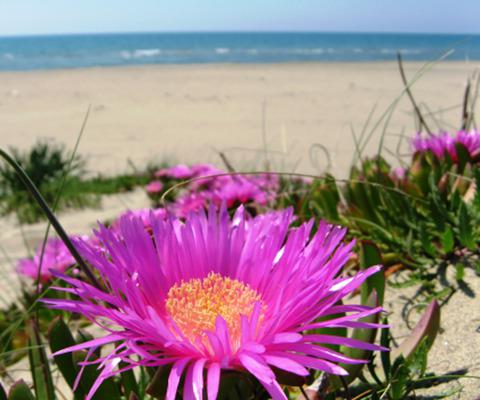当前位置:
X-MOL 学术
›
Appl. Veg. Sci.
›
论文详情
Our official English website, www.x-mol.net, welcomes your feedback! (Note: you will need to create a separate account there.)
Alien flora across European coastal dunes
Applied Vegetation Science ( IF 2.8 ) Pub Date : 2020-04-19 , DOI: 10.1111/avsc.12490 Silvia Giulio 1 , Alicia Teresa Rosario Acosta 1 , Marta Carboni 1 , Juan Antonio Campos 2 , Milan Chytrý 3 , Javier Loidi 2 , Jan Pergl 4 , Petr Pyšek 4, 5 , Maike Isermann 6 , John A. M. Janssen 7 , John S. Rodwell 8 , Joop H. J. Schaminée 7 , Corrado Marcenò 2, 3
Applied Vegetation Science ( IF 2.8 ) Pub Date : 2020-04-19 , DOI: 10.1111/avsc.12490 Silvia Giulio 1 , Alicia Teresa Rosario Acosta 1 , Marta Carboni 1 , Juan Antonio Campos 2 , Milan Chytrý 3 , Javier Loidi 2 , Jan Pergl 4 , Petr Pyšek 4, 5 , Maike Isermann 6 , John A. M. Janssen 7 , John S. Rodwell 8 , Joop H. J. Schaminée 7 , Corrado Marcenò 2, 3
Affiliation

|
Questions: The spread of alien plant species is one of the main threats to the biodiversity of different natural habitats, and coastal dune habitats are among the most affected. There is a considerable local and regional variation in the level of alien plant invasion on coastal dunes. We asked what are the patterns of invasion across European coastal dunes and how they depend on habitat types and coastal regions. Location: Atlantic, Baltic, Black Sea and Mediterranean coasts of Europe. Methods: We used vegetation-plot records from shifting dunes and stable dune grasslands extracted from the European Vegetation Archive (EVA). We quantified richness, frequency and distribution of alien plant (neophyte) species across dune habitats and coastal regions. We also explored the donor habitats and invasion trajectories of these species. Results: In the flora of European coastal dunes, 7% of species were neophytes, for two-thirds originating from outside of Europe and mostly naturalised and ruderal. Shifting and stable dunes were similar in neophyte species composition, but there were more individual occurrences of neophytes in shifting dunes. The neophyte flora composition differed considerably between the Atlantic, Baltic, Black Sea and Mediterranean regions. The highest number of neophyte species was observed on the Atlantic dunes, while the highest number of neophyte occurrences was on the Black Sea dunes. Most of the neophytes originated from North America and the Mediterranean-Turanian region. Erigeron canadensis, Xanthium orientale, Oenothera biennis and Oenothera oakesiana were the most common neophytes. Conclusions: We provided a comprehensive assessment of alien plant invasions in the coastal dunes across Europe and highlighted that coastal dunes should be in the focus of European invasion management strategies.
中文翻译:

横跨欧洲沿海沙丘的外星植物群
问题:外来植物物种的传播是对不同自然栖息地生物多样性的主要威胁之一,沿海沙丘栖息地受到的影响最大。外来植物入侵沿海沙丘的程度存在相当大的局部和区域差异。我们询问了欧洲沿海沙丘的入侵模式是什么,以及它们如何取决于栖息地类型和沿海地区。位置:欧洲的大西洋、波罗的海、黑海和地中海沿岸。方法:我们使用从欧洲植被档案 (EVA) 中提取的移动沙丘和稳定沙丘草地的植被图记录。我们量化了沙丘栖息地和沿海地区外来植物(新植物)物种的丰富度、频率和分布。我们还探索了这些物种的供体栖息地和入侵轨迹。结果:在欧洲沿海沙丘的植物群中,7% 的物种是新手,其中三分之二来自欧洲以外,大部分是归化的和粗野的。流动沙丘和稳定沙丘的新生物种组成相似,但流动沙丘中的新生沙丘个体出现较多。大西洋、波罗的海、黑海和地中海地区的新生植物群组成差异很大。在大西洋沙丘上观察到的新物种数量最多,而在黑海沙丘上发现的新物种数量最多。大多数新手来自北美和地中海-图兰地区。Erigeron canadensis、Xanthium orientale、Oenothera biennis 和 Oenothera Oakesiana 是最常见的新植物。结论:
更新日期:2020-04-19
中文翻译:

横跨欧洲沿海沙丘的外星植物群
问题:外来植物物种的传播是对不同自然栖息地生物多样性的主要威胁之一,沿海沙丘栖息地受到的影响最大。外来植物入侵沿海沙丘的程度存在相当大的局部和区域差异。我们询问了欧洲沿海沙丘的入侵模式是什么,以及它们如何取决于栖息地类型和沿海地区。位置:欧洲的大西洋、波罗的海、黑海和地中海沿岸。方法:我们使用从欧洲植被档案 (EVA) 中提取的移动沙丘和稳定沙丘草地的植被图记录。我们量化了沙丘栖息地和沿海地区外来植物(新植物)物种的丰富度、频率和分布。我们还探索了这些物种的供体栖息地和入侵轨迹。结果:在欧洲沿海沙丘的植物群中,7% 的物种是新手,其中三分之二来自欧洲以外,大部分是归化的和粗野的。流动沙丘和稳定沙丘的新生物种组成相似,但流动沙丘中的新生沙丘个体出现较多。大西洋、波罗的海、黑海和地中海地区的新生植物群组成差异很大。在大西洋沙丘上观察到的新物种数量最多,而在黑海沙丘上发现的新物种数量最多。大多数新手来自北美和地中海-图兰地区。Erigeron canadensis、Xanthium orientale、Oenothera biennis 和 Oenothera Oakesiana 是最常见的新植物。结论:



























 京公网安备 11010802027423号
京公网安备 11010802027423号